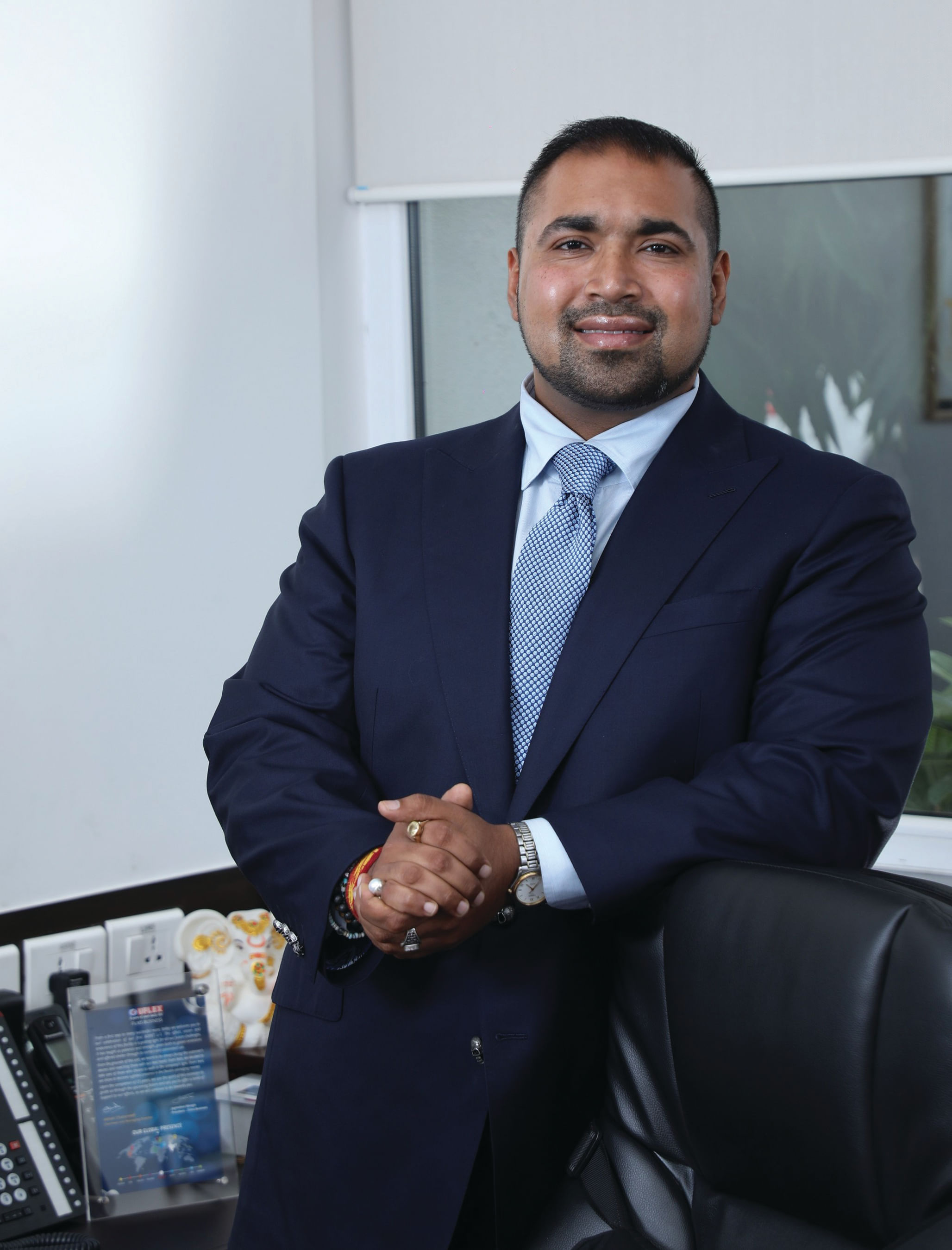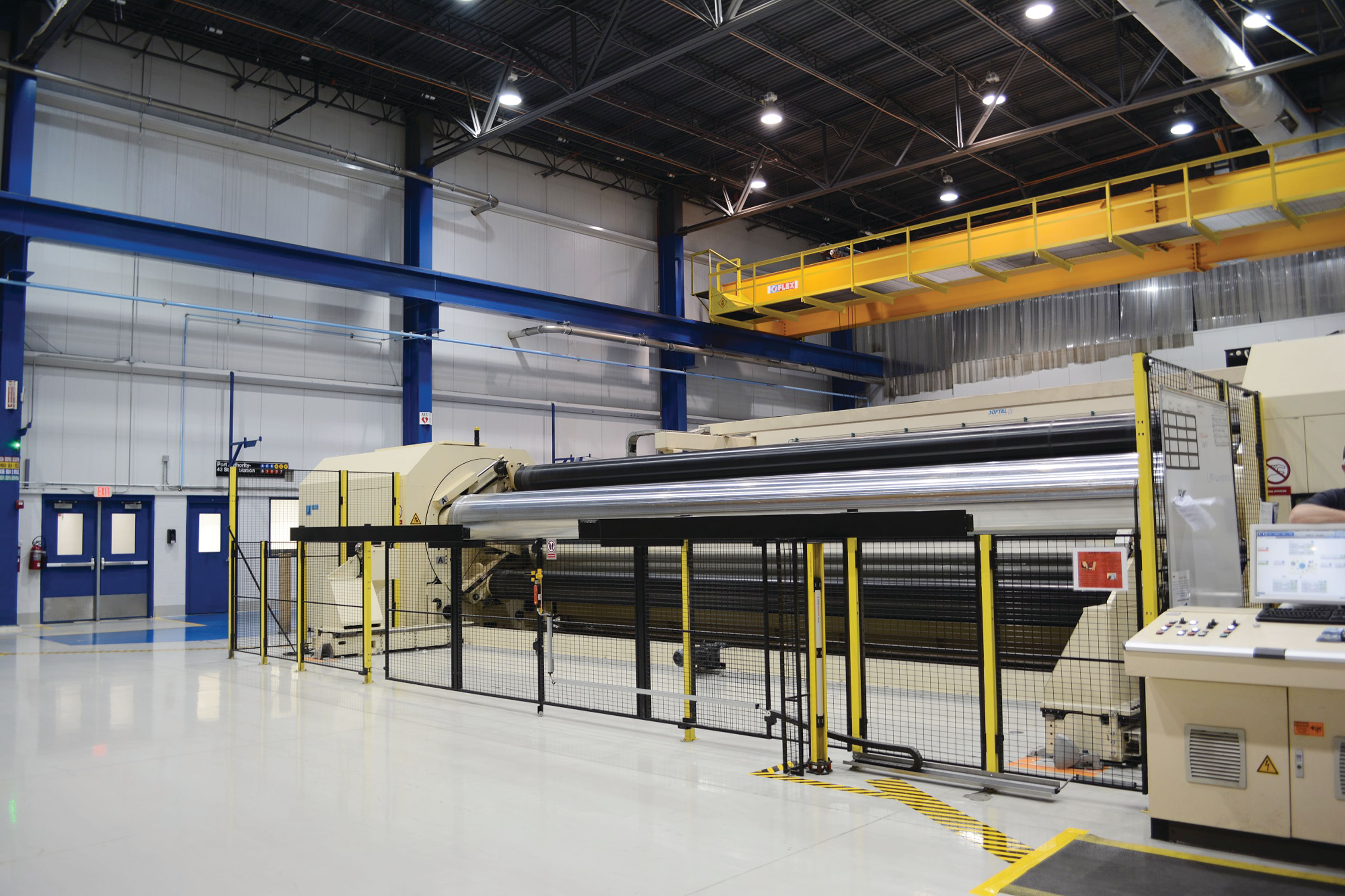UFlex: Brave thinking ushers an opportunity for packaging
Anantshree Chaturvedi met up with Rahul Kumar on the sidelines of Drupa at the UFlex stall. He said, "We have a two-step plan which focuses on providing the best value across all fronts and reinforcing our leadership position through R&D"
10 Sep 2024 | By Rahul Kumar
Rahul Kumar (RK): UFlex aims to serve every segment of the packaging value chain and maintain competitiveness across all of them. The question is, how do you achieve this?
Anantshree Chaturvedi (AC): We closely monitor costs, ensure efficiency across our manufacturing processes, and eliminate non-essential expenses. We have been mindful of waste and are even more vigilant now.
RK: What about your investors and how do your investors get good returns regardless of the economic conditions?
AC: This is exemplified by the diversification across different product segments. UFlex is a diversified company with operations across all packaging industry segments. Therefore, if one segment, such as films, faces challenges in the current packaging business environment, other segments can deliver growth.
RK: What’s happening in the market? Will things remain steady in 2024?
AC: The global outlook continues to be in consolidation. We are hopeful that there will be a market uptick or a demand escalation in the first and second quarters of 2025. Market cycles will adjust to geographic and geopolitical risks. Today, what we are witnessing in the world will prompt these adjustments. Modern markets are more adept and swifter in adapting to changing conditions.
RK: So for the next six months, things will not change much? And hence, the conservative approach …
AC: There is a sense that the manufacturing industry is consolidating or trying to cut costs. There is a problem when everybody starts spending less. But the truth is, there has been a shift in spending. What I am seeing in the Western markets, the US, Mexico, Canada, and Europe, is when a consumer enters a grocery store, they see a packet of chips, a packet of candy, or a combination of both. Pre-Covid, it used to cost USD 1.99 to 2.99. Today, the same packet costs USD 7.99 to 8.99. Now, in their mind, the perception is that instead of buying snacks, they can buy a meal. So, the patterns and choices are changing. Today, a consumer asks, should I buy this? Or should I buy a generic product? Perhaps I should buy a store brand? This reflects a significant change in consumer behaviour.
RK: In that sense, what is the role of a packaging company?
AC: The task for packaging and every ancillary company supplying to that end consumer is to adapt to this change, and that's precisely what is happening. If you observe, all packaging substrates and related businesses are making this shift, except for the core commodities. The price rise has affected basic commodities, such as orange juice concentrates, cocoa, or flour. So, it's not necessarily that people are spending less. There's a shift in the types of spending. There's a shift in the buying pattern and the packaging industry is going through the necessary adjustments.
Rotogravure will retain an advantage over CI flexo because of the fine graining
RK: Which segments are you bullish about?
AC: Health and wellness in digital spaces are on a rise. According to the NielsenIQ eCommerce data for the US market, sales of health-aligned products such as over-the-counter remedies and nutritional drinks have grown by 31%, with a 14% increase in buyers. This growth surpasses the industry, which has seen a 27% increase in sales and a 5% rise in buyer numbers. Now, consumers are smarter. They are making different choices, such as opting to reduce the consumption of candies and potato chips while continuing to purchase healthier options like granola or yoghurt.
RK:Therefore, packaging companies must adapt to these preferences.
AC: The point is, I might lose out on a segment but there will always be another segment to focus on. For example, pet food is a big product. During Covid-19, a lot of people adopted pets. So, the segment is booming. Knowing this, a smart packaging company will make that shift. But a company which is not aware of the market, or not paying attention to what their customers want will be slower to make the move.
RK: We visited your Sanand factory a year ago. It's one of the finest factories in the country. Curious to know, how will the aseptic business capacity at UFlex be increased from seven billion to 12 billion units in a year.
AC: It is one of the finest factories in the country. By debottlenecking the existing aseptic packaging plant at Sanand, Gujarat, we intend to achieve a production capacity of 12 billion packs per annum. The expansion should come live by the end of this year or by the beginning of next year.
RK: There is a lot that is transpiring in the industry. What’s your strategy?
AC: True, there is a new domestic competition emerging, and we must be ready for it. Toward this, we have introduced innovations and developments.
RK: How so?
AC: The best example is our recycling technology. We want to promote this because it is a matter of survival for our industry, not a matter of choice. Eventually, these technologies will need to be adopted in some capacity.
As competitors enter, the market adjusts. For example, today, we are facing challenges with overcapacity in the Indian market. I agree it is a tough time but projected to last only for the next three years. India’s GDP is growing at 6.6% and packaging usually grows at 2% higher than the GDP on an average. Thus, we are growing at 8.5%. Therefore, the excess capacity should balance out within approximately four years.
RK: UFlex’s packaging films R&D Lab, has been accredited by the International Standard ISO/IEC17025: 2017 and the National Accreditation Board for Testing and Calibration Laboratories (NABL). R&D plays a crucial role in your plastic processing plans. What is the secret recipe for your R&D team?
AC: There's no secret recipe, honestly. The key is that we allow our customers, suppliers, and our competitors across the board to access our laboratory services. We realised that we should have an independent way of allowing people to use these facilities, not just for our benefit, but for the benefit of everyone, and at an optimal cost.

RK: So, research and development are your core competencies?
AC: UFlex has grown on the strength of new product development. The laboratory is my favourite place in the company. The key is to pick good projects. You have to appoint good people to handle these projects. You have to make sure that these projects stay on course.
RK: Suddenly, a good number of people have started manufacturing CI flexo printing presses. Is this a boon? Or that things will get difficult? My question is, how would you manage selling these machines?
AC: The reason why there are so many stakeholders in the industry is because the market looks attractive. Someone takes the lead, develops a machine, and then various versions of that machine emerge. There will be those who succeed and others who may not fare as well in the space. I believe everyone will find their place in the segment. People will offer variations in pricing and features.
RK: In this sense, what is the USP of your sleeve technology?
AC: If you look at our new sleeve technology and our new CI flexo technology, these flexo sleeves replicate rotogravure. These last five times longer than regular sleeves, have short changeover times, and are robust. From both an input and running time perspective, Flexo is catching up with rotogravure. However, rotogravure will retain a traditional advantage because of the fine graining. Nonetheless, flexo represents the future as we transition from rotogravure to digital.
RK: Brand owners throw a big challenge; they want a material for a shelf life of six to seven months. As UFlex, what measures do you take to reshape packaging; and offer space-saving packaging?
AC: Your question covers many aspects. Truthfully, shelf life and barriers aren't major concerns. We focus on basic structures, which not only UFlex ‑ but the industry ‑ ensures for shelf life. Variability exists, and optimising the shelf life for one to two years is straightforward.
RK: Your take on smart packaging?
AC: The industry is navigating a phase in smart packaging. There's adoption of QR codes and digital communication. However, a new challenge in smart packaging is the risk of incorrect information being linked through QR codes, potentially directing users to unintended destinations. The challenge lies in addressing this issue. Ultimately, we believe smart packaging should evolve to a point where it integrates seamlessly without requiring a third-party device.
RK: What was the rationale behind the manufacturing of poly contents, and polyester chips?
AC: When global supply chains were disrupted, we observed the impact on the shipping industry and raw material vendors, making it challenging to procure film, grain chips, and resin. We decided to make this investment for our internal use.
RK: Finally, a word about your global operations.
AC: We have persevered, and that's key. Our commitment extends to providing the best value not only to our investors and customers but also to our employees, suppliers, vendors, and beyond.
RK: A challenging time for the film and polymer industry?
AC: Yes, but it’s important to remember that this phase is temporary—it will pass. Now is the time to refocus on R&D, to revisit your development departments, and to concentrate on creating products that will propel you into the future. We are open to collaboration and continuous development. I'm open to these discussions. This is our focus —m oving away from being a commodity player.

Anantshree Chaturvedi, vice-chairman and CEO, Flex Films International, the global arm of UFlex



